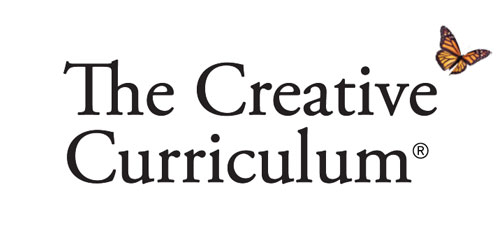CREATIVE CURRICULUM
Creative Curriculum
CREATIVE CURRICULUM
The Creative Curriculum is a developmentally appropriate, research-based curriculum, comprehensive collection of knowledge building and daily practice resources that explains the “what,” “why,” and “how” of teaching. “What” and “why” are explained in the eight curriculum volumes that make up The Foundation.
The eight (8) units of study include:
- Beginning of the Year (4 weeks)
- Clothing (6 weeks)
- Trees (6 weeks)
- Reduce, Reuse, Recycle (6 weeks)
- Buildings (6 weeks)
- Balls (6 weeks)
- Pets (6 weeks)
- Insects (6 weeks)
They contain everything teachers need to know to build and implement a high-quality preschool program. The Creative Curriculum is aligned with the Preschool Learning Foundations and is designed to prepare children for the academic demands of Kindergarten.


What are we learning?
Reduce, Reuse, Recycle Study
Trash and garbage are all around us! Children are fascinated by what is in the garbage can and often pick up trash against our wishes. This study offers opportunities for children to explore a topic that interest them but allows them to gather information, become more aware of the world around them, and solve problems. In this study, children will observe, gather data, explore their community, interview experts, and learn new information. They will use skills in mathematics, literacy, the arts, and technology.
Buildings Study
Young children are very curious about buildings! They want to know how they are constructed and what people do inside them.
This study offers many opportunities to explore buildings firsthand. Children will expand their knowledge and understanding of buildings materials and physical forces. They will explore the concepts in social studies related to shelter, jobs, and the purpose of different structures!
Ball Study
Children love balls! They play with them in so many different ways. They throw them, catch them, kick them and roll them with seemingly endless delight.
This study shows how to use children's interest in balls to help them explore social studies and science concepts related to the features and nature of balls, and to use skills in literacy, math, technology, and the arts as they investigate!
Insect Study
Insect Study leads teachers through the process of conducting an investigation of insects with preschoolers. Together, children and teachers will explore questions such as, “What do we know about Insects? What do we want to find out?” Six weeks of daily plans are included to help teachers provide meaningful learning experiences, individualize instruction, address and successfully engage families in their children’s learning.
What are we learning?
Beginning of the Year Study
The beginning of the school year is an exciting time! Children have many questions as they navigate their new surroundings. Children will become familiar with the classroom and school routines; they will find comfort in being a member of the classroom community while maintaining a secure connection at home.
Clothing Study
Children are interested in clothing from a very young age. This study shows how to use children’s interest in clothes to help them explore social studies and science concepts about different kinds of clothing and where and how clothing is made. The study also helps children use skill in literacy, math, technology, and the arts as they investigate.
Tree Study
Trees fascinate children and spark their curiosity and wonder. This study builds upon children’s interest in trees to help them explore science and social studies. Rather than emphasize naming different trees, this study focuses on helping children develop an understanding of the characteristics of trees and their role in our natural and man-made worlds. During this study, children use their skills in literacy, math, technology, and the arts to investigate and represent their knowledge about trees.
Pet Study
Pet Study leads teachers through the process of conducting an investigation of pets with preschoolers. Together, children and teachers will explore questions such as “How do we care for pets?” and “How do pets make us feel?” Six weeks of daily plans are included to help teachers individualize instruction, provide meaningful learning experiences, individualize instruction, address objectives for development and learning and successfully engage families in their children’s learning.
